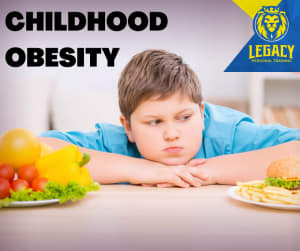
Childhood Obesity
Childhood obesity is a serious medical condition that affects children and adolescents. Approximately 17 percent of children and teenagers (ages 2 to 19) were obese from 2011 to 2012, and 31.8 percent were either overweight or obese. It occurs when a child is well above the normal weight for his or her age and height. Childhood obesity rates have more than tripled since 1980. Childhood obesity is particularly troubling because the extra pounds often start children on the path to health problems that were once confined to adults, such as diabetes, high blood pressure and high cholesterol. Childhood obesity can also lead to poor self-esteem and depression.
Children become overweight and obese for a variety of reasons. The most common causes are genetic factors, lack of physical activity, unhealthy eating patterns, or a combination of these factors. Only in rare cases is being overweight caused by a medical condition such as a hormonal problem. A physical exam and some blood tests can rule out the possibility of a medical condition as the cause for obesity. Although weight problems run in families, not all children with a family history of obesity will be overweight. Children whose parents or brothers or sisters are overweight may be at an increased risk of becoming overweight themselves, but this can be linked to shared family behaviors such as eating and activity habits.
A child's total diet and activity level play an important role in determining a child's weight. Today, many children spend a lot time being inactive. For example, the average child spends approximately four hours each day watching television. As computers and video games become increasingly popular, the number of hours of inactivity may increase. It is coming to a point where now in 2016 even video games are becoming to stimulating for kids to actually play so they will just watch others play the game instead of actually playing the game themselves. While more and more schools continue to cut back programs like physical education, and at the elementary level we are seeing more schools combining lunch and recess not allowing children enough time eat and burn off any energy.
When talking about a child’s diet it is has long been common practice to swing through a drive thru since it is a convenient option, and most kids enjoy the food, but when looking at three popular chains, calories in a large cheeseburger meal, with fries and a regular cola beverage, ranged from 1144 to 1757, and that does not even hit the sodium content that goes with the calories.
Now let’s look at just Arizona
Arizona ranks 25 in overall prevalence with 30.6% of children considered either overweight or obese.
The Arizona prevalence of overweight and obese children has risen since 2003.
According to the 2008 Pediatric Nutrition Surveillance System (PedNSS), which assesses weight status of children from low-income families participating in WIC, 30.6% of low-income children age 2-5 are overweight or obese in Arizona.
What can you do?
Battling childhood obesity is not rocket science, it starts at home. Encouraging your children to get out and increase their physical activity level is a great place to start. Along with getting the whole family on a proper diet and making it a family wide goal and not just an individual child's goal. Getting out with your kids can go a long way towards helping your kids stay healthy if they see you being active they will want to be active with you. Go for walks, runs or hikes as a family, encourage them to get involved in youth sports, or take them to a workout with you. The out dated thinking that strength training can hinder a child's development has long since been proven wrong. There are many ways to involve the entire family in healthy habits, but increasing the family's physical activity is especially important. Again just some general ideas and things to think about when encouraging a healthy life style change for you and your kids are:
Leading by example. If your children see that you are physically active and having fun, they are more likely to be active and stay active for the rest of their lives. Plan family activities that provide everyone with exercise, like walking, biking, or swimming. Make an effort to reduce the amount of time you and your family spend in sedentary activities, such as watching TV or playing video games. Be sensitive to your child's needs. Overweight children may feel uncomfortable about participating in certain activities. It is important to help your child find physical activities that they enjoy and that aren't embarrassing or too difficult.
Whatever approach parents choose to take regarding an overweight child, the purpose is not to make physical activity and following a healthy diet a chore, but to make the most of the opportunities you and your family have to be active and healthy.

